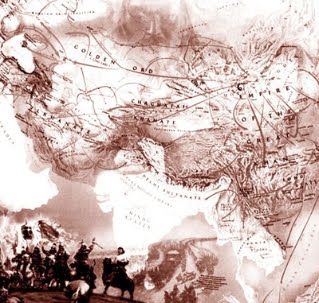3:49 PM Xvннv гvpэн |
 Хүннү гүрэн байгуулагдсаны 2200 жилийн ойг Монголчууд тэмдэглэх учиртай 2009 оны 7-р сарын 20 Хүннү гүрэн байгуулагдсаны 2200 жилийн ойг Монголчууд тэмдэглэх учиртай Төв Азийн тэгш өндөрлөгт нүүдэлчдийн байгуулсан Хүннү гүрэн дорноос өрнө тийш Солонгосын хойгоос Иран Ирак хүртэл, Байгаль далайгаас түмэн газрын цагаан хэрэм хүртэлх асар уудам газар нутгийг эрхшээлдээ оруулж тухайн үедээ Ази тивийн хамгийн хүчирхэг гүрэн болох Энэтхэг, Хятад, Перстэй эн зэрэгцэж байсан аугаа их сүр хүчний илэрхийлэл болж байсан юм. Төв Азийн энэ нүүдэлчдийн довтолгооноос эмээхдээ Хань гүрний хаад алдарт түмэн гадрын цагаан хэрмийг бариулж байсан тухай түүхэн эх сурвалжуудад тодорхой дурдсан нь бий. Монголчуудын шууд өвөг дээдэс болсон Хүннүчүүдийн тухай өнөө цагийн, бид Цагаан хэрэм бариулахад хүргэсэн энэ миний өвөг дээдэс гэж бахархдаг хэрнээ өвгийнхөө дурсгалд зориулж юу хийж бүтээв ээ. Олонх судлаачдын санал нэгтэйгээр дүгнэж байгаагаас Модун шанью Хүннү гүрнийг МЭӨ 209 онд байгуулжээ. Энэ учир жанцангаар нэхэн хөөвөл энэ жил Хүннү гүрэн үүсэн байгуулагдсаны 2200 жилийн түүхт ой тохиож байна. Дан ганц монголчуудын тухайд ч бус бүрэлдэхүүнд багтаж байсан сая сая Түрэг, Уйгар, Тунгус зэрэг угсаатан ч их ойг тэмдэглэн өнгөрүүлэх учиртай. Арван хоёр жилийн мөчлөг, жарнаар хуваагдах он тооллын эхийг чухам тэд л зохиож мөрдөж байсныг өнөөгийн дорно дахиныхан Сарны тоолол хэмээн өөриймсгөжээ. Төр улсаа гурав хуваан, аравтын системийг армидаа төдийгүй засаг захиргааны хуваарилалтдаа нэвтрүүлснийг Чингис хаан өөрийн эзэнт гүрэндээ өв уламжлан авч тухайн үеийн хамгийн хүчирхэг төр нийгмийн системийг тогтоож байсан гээд энэ их гүрнээс үлдэж хоцорч, өвлөж уламжлагдсан зүйл цөөнгүй. Нүүдэлчдийн түүхэнд шинэ үe, шинэ нийгмийг авчирсан Модун шаньюйгийн үүсгэсэн Xүннү гүрний 2200 жилийн ойг бид тэмдэглэх эрхтэй үндэстэн. Монголчууд баяр наадам, ой тэмдэглэхдээ гаргуундаа бус эх түүхээ хүндэтгэдэг, өв соёлт их гүрний үp сад гэдгээ дэлхийд харуулах, таниулахын төлөө хийх ёстой үүрэг энэ. Чухам иймээс л энэ жил тохиох Монголчуудын эртний өвөг Xүннү гүрэн байгуулагдсаны 2200 жилийн ойг Монгол Улс санаачлан тэмдэглэн өнгөрүүлэх нь ёст хэрэг билээ. Бид Чингис, Чингис гэж хашгиралдах мөртлөө түүний шууд эхлэл болсон Модун шаньюйн тухай ганц ч кино, жүжиг, бүтээл, хөшөө алга. Овоо суварга босгож тахиж тайх болохоороо хэдэн зуун саяар тоологдох хөрөнгө мөнгө гаргахаасаа огтхон ч сийхгүй хэрнээ ийм түүхэн ойг нүдэн балай чихэн дүлий өнгөрөөж болно гэж үү. Жил дундаа орлоо. Найрлаж наадамдья гэсэнгүй. Хамгийн гол нь Хүннү гүрний дэлхийн болон Азийн түүхэнд гүйцэтгэсэн үүргийн талаар нүүдэл угсааны улс гүрнүүдийн эрдэмтэн мэргэдийг оролцуулсан олон улсын эрдэм шинжилгээний хурлыг зохион байгуулж бүдэг бадаг үлдэж түүхэн эх сурвалжуудын талаар нэгдсэн ойлголттой больё, Хүннү судлалыг шинэ шатанд гаргая, нүүдэл угсаатан бусад улс үндэстэнтэйгээ соёлын нягт харилцаатай байх эх үндэсийг тавья. Тэртээх 2200 жилийн өмнө хүчирхэгжиж хожмоо хоёр хэсэгт хуваагдан задарсан. Хүннүчүүд могой гурав тасарсан ч гүрвэлийн дайтай гэгчээр нэг хэсэг нь наран шингэх зүгт тэмүүлэн дэлхийн хамгийн хүчирхэг гүрэн болох Ромыг мөхөөн, догшин варварууд, готуудыг чичрүүлж, үлгэрийн мэт тансаг Константонополиос жил бүр асар их эд баялаг татварлан авч явлаа. Догшин Атилла хэрхэн өрнийг чирүүлж байсан тухай өнөөг хүртэл европчууд шагшин гайхацгаадаг. Харамсалтай нь энэ Хүннүчүүд Төв азиас тэр тусмаа Монголын тал нутгаас ирцгээсэн гэдгийг олонх мэддэггүй. Өрнөдөд очиж түйвээж явсан цагаан Хүннүчүүд өнөөгийн Унгарчуудын бас л шууд өвөг дээдэс гэдгээрээ Унгарчууд өнөө хир нь бахархдаг. Ази Европын дамнасан Түрэгүүдийн ч өвөг дээдэс. Ингэхлээр Хүннү гүрний алдар гавьяа бас л тэдэнд хамаатай. Гэхдээ эх сурвалж нь Монголчууд бидний алтан өлгийн Төв азийн тэгш өндөрлөг. Чухам иймийн учир л нүүдэл угсааны голомтыг сахиж байгаагийнхаа хувьд Хүннү хэмээх энэ аугаа гүрний үүсэн байгуулагдсаны 2200 жилийн ойг бахархалтайгаар тэмдэглэх учиртай билээ. In English Hunnu Empire Hunnu's the first creators of the Mongolian State founded a powerful empire in
the fourth century BC to become immortal in the history of Central Asia. The majority of
Hunnu lived in Ordos near the southern border of Mongolia. In the third century BC, these
aimags united, subjugating a great number of neighboring aimags. It is considered that the
first Mongolian State was established when Maodun declared himself Shanyui and ruled the
state between 209 and 176 BC. But the first Shanyui of Hunnu was Tumen father of Maodun.
The Hunnu Empire of that period was a union of powerful aimags that came to acquire the
features of a state. Shanyui divided Hunnu territory into three parts: Eastern, Western
and Central. |
|
|
| Total comments: 0 | |
